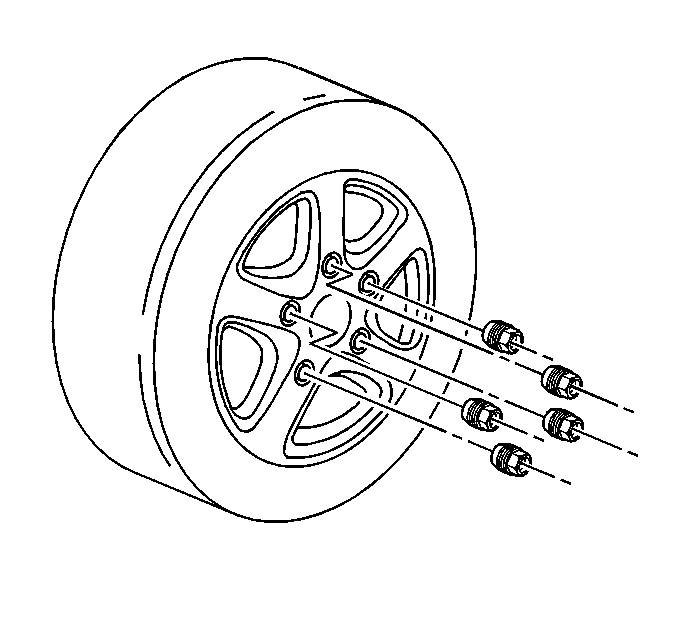- Raise and support the vehicle. Refer to Lifting and Jacking the
Vehicle in General Information.
- Remove the wheel cover, the wheel hub cap or the wheel nut caps
as necessary.

- Remove the wheel nuts.
- Mark the relationship of the wheel to the hub.
Caution: If penetrating oil gets on the vertical surfaces between the wheel and
the rotor or drum, it could cause the wheel to work loose as the vehicle is
driven, resulting in a loss of control and an injury accident.
Notice: NEVER use heat to loosen a tight wheel. It can shorten the life of the
wheel, wheel nuts and wheel bearings. Excessive force, such as hammering the
wheel or tire, can also cause damage and is not recommended. Slight tapping
of the tire side wall, such as with one's hand or a rubber mallet, is normally
acceptable.
Important: Do not apply penetrating oil to the wheel or wheel studs.
- Remove the tire and wheel. If the tire and wheel cannot be removed,
perform the following steps:
| 5.1. | Install the wheel nuts. |
| 5.2. | Then loosen each wheel nut two full revolutions. |
| 5.4. | Rock the vehicle from side to side firmly. |
| 5.6. | Apply the regular brake. |
| 5.7. | Place the transmission into Drive. |
| 5.8. | Allow the vehicle to roll forward slightly. |
| 5.9. | Apply the regular brake firmly and quickly. |
| 5.10. | Place the transmission into Reverse. |
| 5.11. | Allow the vehicle to roll backward slightly. |
| 5.12. | Apply the regular brake firmly and quickly. |
| 5.13. | Repeat Steps 5.4 through 5.12 until the wheel can be removed from
the vehicle. |
- Clean the following components in order to remove any corrosion
or foreign material accumulation:
| • | The wheel mounting surface |
| • | The brake rotor/brake drum mounting surface |

